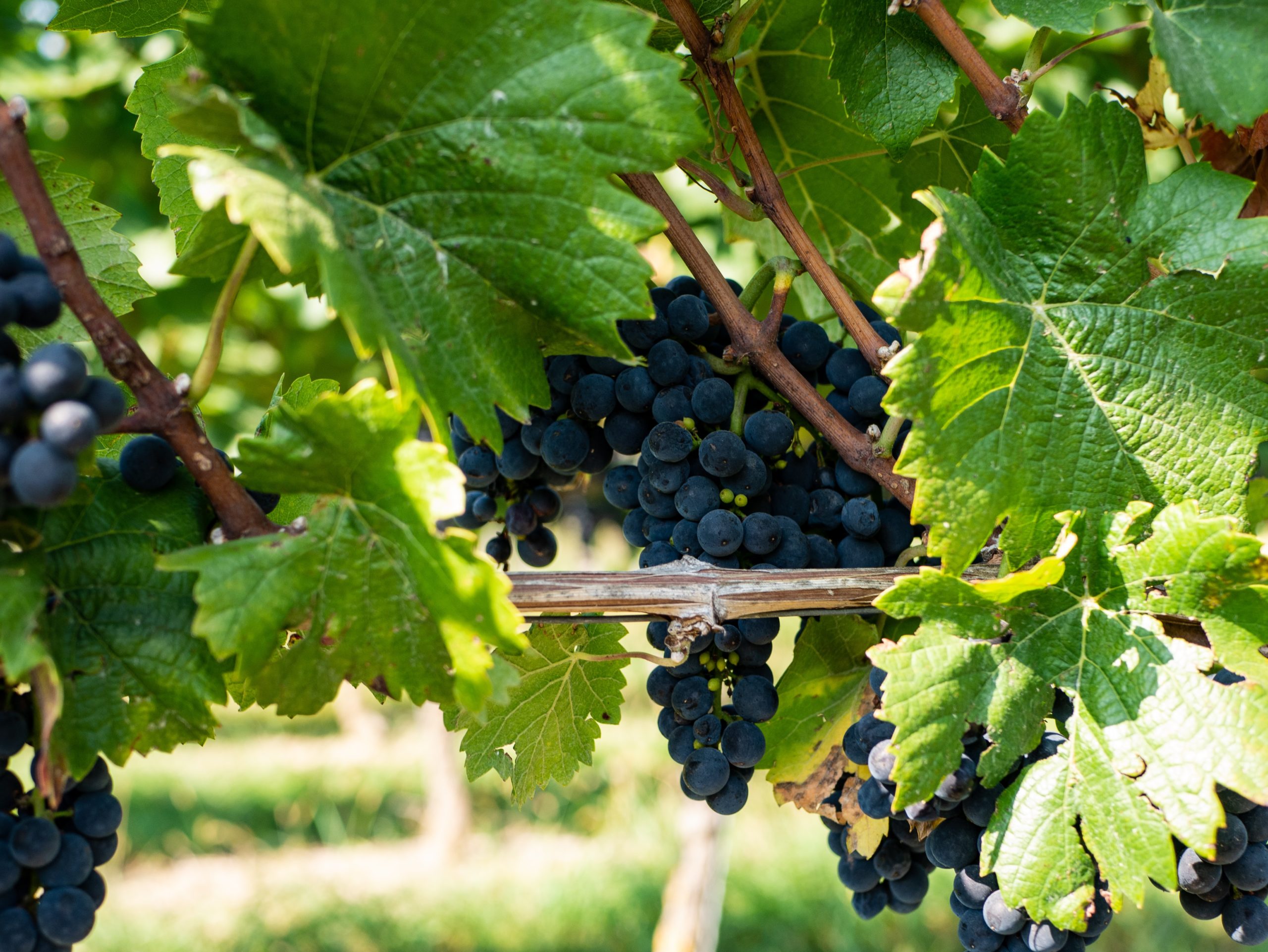When you think of vineyards, do you imagine those idyllic scenes of grapevines blanketing sun soaked slopes, perhaps somewhere in the Mediterranean or Napa regions?
But did you know that you can grow grapes in Tennessee?
It’s true! In fact, there are 69 wineries and 1,000+ acres of vineyard across the state of Tennessee.
At Stoney Creek Farm, we grow two types of muscadine grapes — bronze and a red seedless — for our own personal use. We do not grow enough to sell to the public, but I make muscadine jelly to use all year round and give to family members. We think the bronze variety has the best flavor, but that’s just our opinion.
Don’t live in Tennessee? Much of the guidance found in this post for growing grapes in Tennessee will still apply to you. However, be sure to research which grape varieties grow best for your zone, geography, and soil.
Which Grape Varieties to Plant in Tennessee
Where you live will dictate which grape varieties you can grow. For growing grapes in Tennessee, American and French-American hybrid varieties are your best choices. Vitis Vinifera is a common grape variety that also grows well here.
Where to Grow Your Grapes
Grapes like to be elevated — but not too elevated. If you have slopes on your property, plant your grapes higher up on the slope. This helps to protect grapes from frost and disease. However, don’t plant at the hill’s peak, since wind damage and winter freeze become more of a possibility on hilltops.
Grapes will need full sun; shade will make them “leggy” and they will produce less quality fruit, while also increasing their risk of disease.
Prep the soil
Grape roots like to go deep. As this guide from the TN Ag Extension explains, “Ideally, vines need a minimum of 24 to 36 inches of rooting depth before encountering an impervious layer, such as rock or a hardpan. The deeper and more extensive the root system, the more capable the vine will be to withstand stresses such as drought, low fertility and low soil temperatures.”
Plant your grapes in well-draining soil so their roots don’t become waterlogged. Additionally, lay off the fertilizer. In fact, “such soils are undesirable, since growth may be excessive, causing shaded, poor quality fruit and increased disease pressure.”
Always test your soil before planting — especially with grapes! Because grapevines are long-lasting plants (we’re talking years here), once they are planted, you can’t amend the soil.
Test your soil 6 months prior to planting your grapes. You can learn how to test your soil here.
RELATED READING:
When to Plant
To grow grapes in Tennessee, the best time to plant is in late winter to early spring (so mid-February to early April). If you plant too early, like in the fall or early winter, you put the plant at risk for injury or death from long freezes. However, if you wait too late, and plant in late April or beyond, hot and dry conditions could inhibit plant growth.
Where to Purchase Your Vines
You want to purchase strong, hardy vines that are at least a year old. You can find these at reputable nurseries.
Need help deciding how many vines to purchase? The TN Ag Extension offers this advice:
“Calculate the number of vines needed based on the assumption that each mature plant will yield about 15 pounds of fruit (25 to 35 pounds for a mature muscadine vine) and that about 15 to 20 pounds of fruit are required to give about one gallon of juice.”
Planting Your Grape Vines
Space your grapevines about 8 – 10 feet apart in rows — the exact spacing will depend on grape variety and soil fertility, since some varieties need more space to spread their wings (I mean… vines).
When spacing rows apart, it’s a 6 feet minimum. If you plant your rows any closer, you risk plants accidentally shading each other and blocking the sunlight.
Before planting, ensure that you’ve removed any dead or infected roots, but don’t overdo it with the pruning. Holes should be deep and wide enough to fit the roots without needing to bend them to fit the hole. Fill in the hole with soil so that it is level or a bit higher than the surrounding soil.
Pruning & Training Your Grape Vines
Your grape vines will need pruning and training. The TN Ag Extension puts it this way:
“Pruning and training are two separate practices that play very important roles in the development and maintenance of grapevines. They influence light distribution throughout the canopy, which greatly affects yields, fruit quality and pest problems.”
For trellis, you can choose between a vertical trellis or bilateral cordon system. (See more about trellis design here.)
Read more about pruning and training here.
When You Can Expect Fruit
Grape production depends on the plant variety — but it can take between 3 – 4 years to get those beautiful grapes bursting with flavor. You can expect no fruit production in the first two years, with the potential for light fruit in the third year.
Sure — grape growing may be a time investment, but can you really beat enjoying your own homegrown grapes? We don’t think so!
To learn more about growing grapes in Tennessee, we recommend these two guides from the Tennessee Ag Extension: Grape Growing in Tennessee and So You Want to Grow Grapes?


